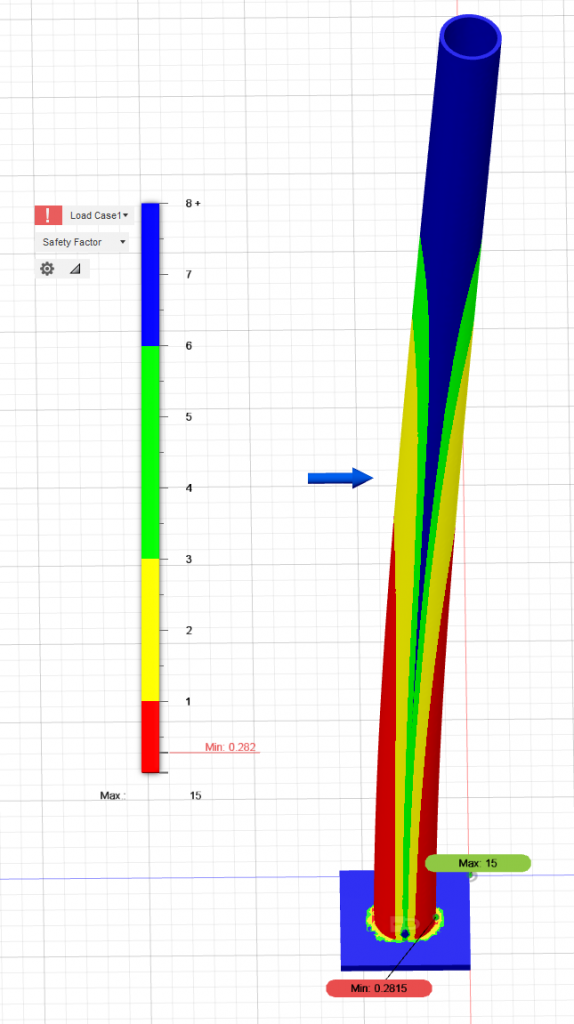I’m not a civil engineer, part 2, post loading
2020-07-20
Now that we have a defensible way to calculate wind force per square foot of fence we need to put that to practical use. The main load bearing part of a fence is the fence post. We’re interested in the load generated on the post above the ground where the fence attaches to it. This will also play into the footer design later.
The way fence post loads are calculated, and I swear I saw this in an ASCE standard, but I can’t verify it right now, the loaded area of a fence post is half way to a post on either side. In other words the fence area (for the purpose of calculation) is divided in such a way that a fence post is always in the center of an area. This of course means that load is not equally distributed among the fence posts as the outer fence posts are seeing only half of the calculated per post load. We need to account for this.
Here are the variables we will be working with.
\(F\) – Total force on the fence as calculated here
\(N_p\) – Number of fence posts
\(L_p\) – Nominal load per post – \(F/N_p\)
\(L_{pe}\) – Load on edge post – \(L_p/2\)
\(L_{pi}\) – Load on inner posts – \( \frac { (L_p \times N_p – 2) + L_p }{N_p -2} \)
We don’t really care about \(L_{pe}\), but I included it for completeness. In \(L_{pi}\) we’re distributing the left over loads from the edge posts over the inner posts.
So, let’s assume a fence that is 25 feet wide and 6 feet tall. Total area \(A_f = 25 \times 6 = 150 ft^2 \). We know that the total load \(F = 41.3712 × A_f = 41.3712 \times 150 = 6205.68 lb \). So a 25×6 fence will have to hold back 3.1 tons of force. Seems impressive, but that’s only 0.2873 psi. Wimpy! But of course that’s for the whole area of the fence. The load is concentrated on the fence posts. Using the above equation for load for inner posts (\(L_{pi}\) we can put together a fancy table for showing post loads
| 3 posts | 4 posts | 5 posts | |
| \(L_{pi}\) | \(L_p = 6205.68 / 3 = 2068.56 \)
\(L_{pi} = \frac {2068.56 \times 1 + 2068.56}{1} = 4137.12lb \) |
\(L_p = 6205.68 / 4 = 1551.42\)
\(L_{pi} = \frac {1551.42 \times 2 + 1551.42}{2} = 2327.13lb \) |
\(L_p = 6205.68 / 5 = 1241.136 \)
\(L_{pi} = \frac {1241.136 \times 3 + 1241.136 }{3} = 1654.848lb \) |
| Spacing | 8.3 feet | 6.25 feet | 5 feet |
So that kind of makes sense. The more posts there are the less force is exerted on each one of them. And again, this is for the inner posts. If you multiple \(L_{pi}\) by \(N_p\) you will not get \(F\).
Can a post made of 2.5 inch schedule 40 ASTM53 pipe support \(L_{pi} – 4137.12\)? That’s a question to ask the computer.
Answer: Hell to the naw and by a lot. This leads us to a reckoning: what exactly are we trying to achieve here with all this fancy cipherin’. I’m not going to simulate the other spacing options for reasons that will be explained in the next post.
